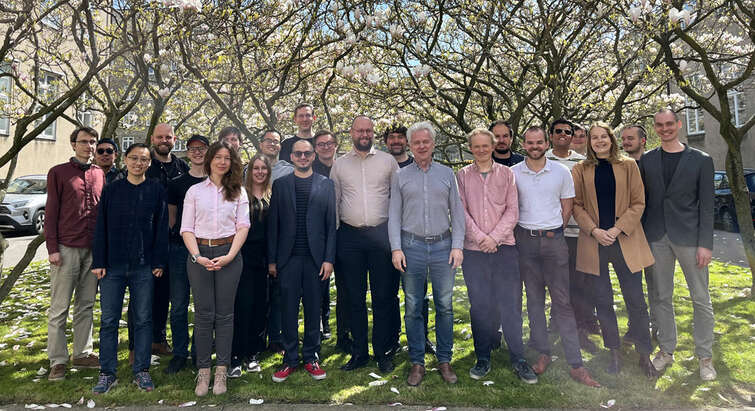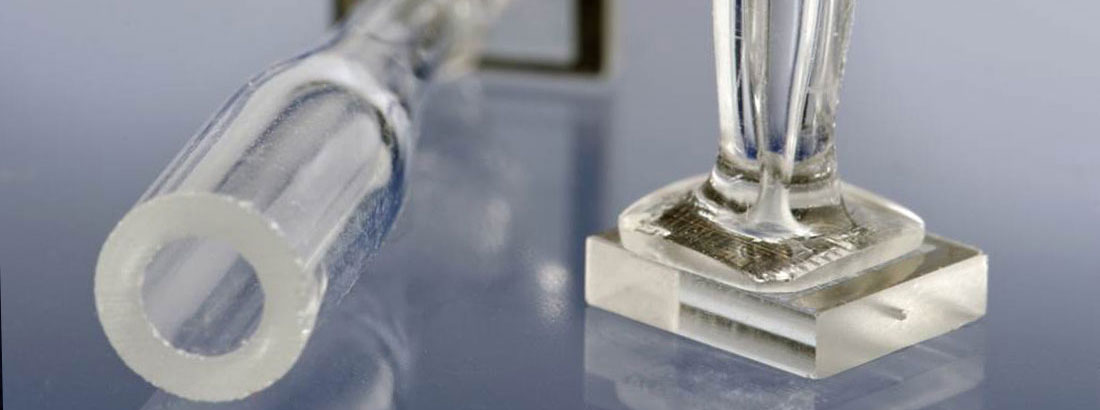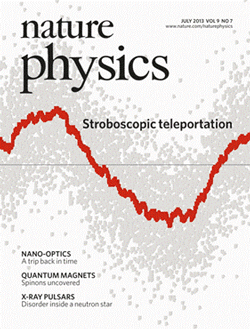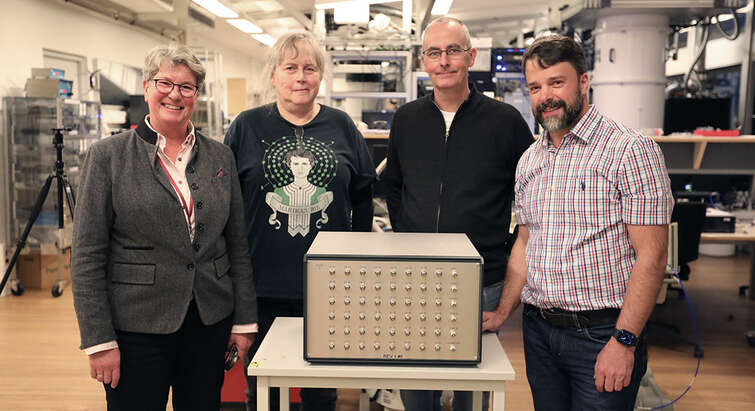

Cell experiments
In our group we focus on investigating and exploiting quantum effects occurring in anti-reflection coated Cesium vapor cells at room-temperature. Past and current projects include quantum teleportation, quantum memory, entanglement and measurements beyond the standard quantum limit.
Long lived spin states at room temperature
Low temperatures are usually required for quantum information processing because otherwise quantum states can be easily destroyed by collisions and other dissipation processes. We use spin protecting alkene coatings for the cell walls which preserve spin coherence of alkali atoms at room temperature for up to a second despite thousands of wall collisions.
Entanglement
EPR entanglement, introduced by Schrödinger and discussed by Einstein, Podolsky and Rosen in their famous paper in 1935, can be described as non-local quantum correlation between two subsystems. We have demonstrated entanglement between two macroscopic objects: two ensembles of Cesium atoms contained in separate glass cells. In our lab, entanglement has been created by a quantum non-demolition measurement in 2001 [1] and more recently a steady state entanglement was created using dissipative processes [2].
 Quantum teleportation
Quantum teleportation
Using entanglement, information encoded in two non-commuting variables which cannot be measured simultaneously, can be sent between two parties, Alice and Bob, in a secure fashion. In our 2006 experiment [3], information encoded in light was teleported into the atomic spins. More recently in 2013 [4], a quantum state was teleported from one atomic object to another over a distance of 0.5 meters.
Entanglement assisted sensing
Tiny magnetic fields can be detected by sending light through atoms whose magnetic moment (spin) reacts to the field. We have achieved sub-femtoTesla magnetic field sensitivity with a cm-sized atomic ensemble, and used entanglement to improve the sensitivity of our atomic magnetometer [5]. Currently, we are developing smaller magnetometers (100 um size) useful for detecting magnetic fields with much higher spatial resolution for bio- and medical applications.
Current projects:
On-demand single-photon source:
In order to enable long distance entanglement and communication, one experiment is dedicated to building the elementary building block towards long distance entanglement distribution by enabling mass-deployable quantum repeaters. These are based on Cesium ensembles at room-temperature, such that single photons can generated and stored efficiently. Read more
Magnetometry:
Optically-pumped atomic magnetometers show record sensitivities in measuring magnetic fields. We are exploring the quantum limits of these Cesium atomic ensemble based devices, along with their possible application within the bio-medical field. Read more
References:
[1] Experimental long-lived entanglement of two macroscopic objects
B Julsgaard, A Kozhekin, and E S Polzik
Nature, 413:400 (2001).
[2] Entanglement Generated by Dissipation and Steady State Entanglement of Two Macroscopic Objects
Hanna Krauter, Christine A. Muschik, Kasper Jensen, Wojciech Wasilewski, Jonas M. Petersen,
J. Ignacio Cirac, and Eugene S. Polzik
PRL 107, 080503 (2011)
[3] Quantum teleportation between light and matter,
Jacob F. Sherson, Hanna Krauter, Rasmus K. Olsson, Brian Julsgaard, Klemens Hammerer, Ignacio Cirac and Eugene S. Polzik
Nature 443, 557(2006).
[4] Deterministic quantum teleportation between distant atomic objects
H. Krauter, D. Salart, C. A. Muschik, J. M. Petersen, Heng Shen, T. Fernholz & E. S. Polzik
Nature Physics 9, 400–404 (2013)
[5] Quantum Noise Limited and Entanglement-Assisted Magnetometry
W. Wasilewski, K. Jensen, H. Krauter, J. J. Renema, M.V. Balabas, and E. S. Polzik
PRL 104, 133601 (2010)

